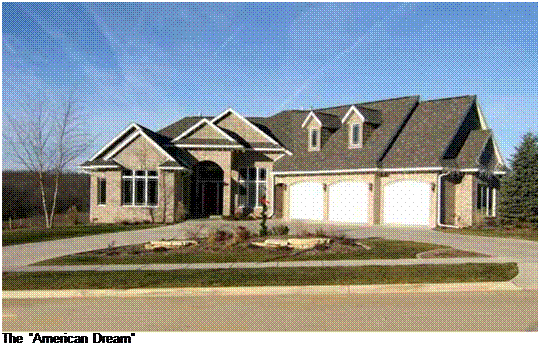A Good Home
A small house is not merely as good as its larger correlate; it is better. A home that is designed to meet its occupants’ domestic needs for contented living without exceeding those needs will invariably surpass the quality of a bigger one in terms of sustainability, economics and aesthetics.
Under no circumstances does a 3,000-square foot house for two qualify as "green.” All the solar gain and reclaimed materials in the world can never change that. At 2,349 square feet, the average American house now emits more carbon dioxide than the average American car.2
Our houses are the biggest in the world—four times the international average. Since 1950, the median size of a new American house has more than doubled, even though the number of people per household shrank by more than 25 percent.3 Not so long ago, you could expect to find just one bathroom in a house; but, by 1972, half of all new homes contained two or more bathrooms. Ten years later, three-quarters did. More bathrooms, more bedrooms and dens, bigger rooms overall, and, perhaps most notably, more stuff, have come to mean more square footage. America’s houses have, quite literally, become bloated warehouses full of toys, furniture and decorations, and a lot of things we may never see or use.
As prodigal as this may seem already, even a space capable of meeting our extravagant living and storage needs is not always enough. We still have to worry about impressing a perceived audience. Entire rooms must be added to accommodate anticipated parties that may never be given and guests
 |
who may never arrive. It is not uncommon for a living room to go unused for months between social gatherings and, even then, quickly empty out as guests gravitate toward the informality of the kitchen.
Until recently, the issue of over-consumption was conspicuously absent from mainstream green discourse. You are unlikely to find the answer to sprawl offered in a sustainable materials catalogue. Accountable consumption stands to serve no particular business interest. Building financiers and the real estate industry are certainly pleased with the current situation. Bigger is better, from their perspective, and they are always eager to tell us so.
If you do only one thing to make your new home more environmentally sound, make it small. Unless supporting the housing industry is the kind of sustainability you hope to achieve, a reasonably-scaled home is the best way there is to make a positive difference with real estate.






Leave a reply